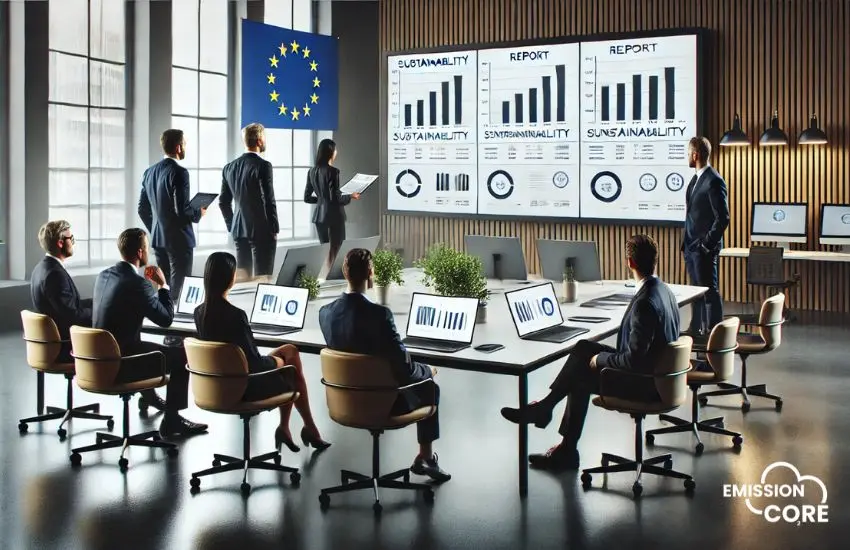Introduction
In today’s evolving regulatory landscape, businesses operating within the European Union must navigate an increasingly complex set of sustainability regulations. Compliance is not just about legal obligation—it is a strategic opportunity to enhance brand trust, reduce environmental impact, and future-proof operations.
This article outlines the key EU sustainability regulations companies must adhere to, and provides a practical roadmap for maintaining long-term compliance.
Why EU Sustainability Regulations Matter
The EU aims to become the world’s first climate-neutral continent by 2050. To achieve this, a comprehensive set of legal frameworks has been established that affects all industries. Companies—particularly those in high-impact sectors—are now required to measure, report, and improve their environmental performance under strict standards.
Staying compliant is crucial not only to avoid legal risks, but also to remain competitive in a market that increasingly prioritizes transparency and ESG performance.
Key EU Sustainability Regulations Explained
EU Taxonomy Regulation
A classification system that defines what qualifies as an environmentally sustainable economic activity. Businesses must disclose the alignment of their operations with taxonomy objectives.
Corporate Sustainability Reporting Directive (CSRD)
Requires large companies to publish detailed reports on their environmental and social impacts, aligned with EU sustainability goals and disclosure standards.
Eco-Management and Audit Scheme (EMAS)
A voluntary management tool designed to help organizations continuously improve their environmental performance through structured audits and reporting.
Core Compliance Requirements for Businesses
Financial Disclosure
Businesses must provide detailed insights into how their economic activities align with the EU Taxonomy framework.
Sustainability Reporting
Under CSRD, companies are obligated to disclose their environmental risks, strategies, and progress in a structured and verifiable format.
Continuous Environmental Improvement
Using EMAS or similar frameworks, companies are encouraged to adopt a cycle of planning, implementing, reviewing, and improving environmental performance.
Common Challenges and Practical Solutions
Complexity of Regulations
The coexistence of overlapping directives can create confusion and compliance gaps.
Solution: Implement centralized platforms or tools to manage regulatory requirements in one place.
Resource Constraints
SMEs often lack the in-house expertise or personnel needed for full-scale compliance programs.
Solution: Engage sustainability consultancies that offer tailored services and up-to-date regulatory guidance.
Adapting to Evolving Standards
The frequency of regulatory updates can lead to implementation delays or misalignment.
Solution: Subscribe to official EU communication channels and set internal review cycles for policy adaptation.
Strategic Implementation Roadmap
- Conduct a Sustainability Compliance Audit
Review existing processes to identify alignment gaps with EU directives. - Develop a Sustainability Compliance Plan
Set measurable goals, timelines, and department responsibilities. - Educate and Train Teams
Ensure that staff across departments understand regulatory impacts and responsibilities. - Invest in Sustainable Technology
Adopt tools and systems that reduce environmental footprint and enable better data tracking. - Review and Update Policies Regularly
Create an internal protocol for reviewing sustainability performance and adapting to new legislation.
Looking Ahead: Trends to Watch
The push for climate neutrality in the EU will intensify. Regulations will continue to evolve with increased focus on product-level accountability, transparency in supply chains, and digitized environmental data—such as through the upcoming Digital Product Passport (DPP) initiative.
Businesses that anticipate these shifts and integrate sustainability at the core of their strategy will be better positioned to innovate and lead.
Conclusion
Understanding and complying with EU sustainability regulations is essential for businesses that operate—or plan to operate—in the European market. By taking a proactive approach to compliance, companies can reduce risk, gain stakeholder trust, and unlock long-term value through sustainable innovation.
Sustainability is not just a regulatory checkbox—it’s a foundation for resilience, relevance, and leadership in the decades to come.



